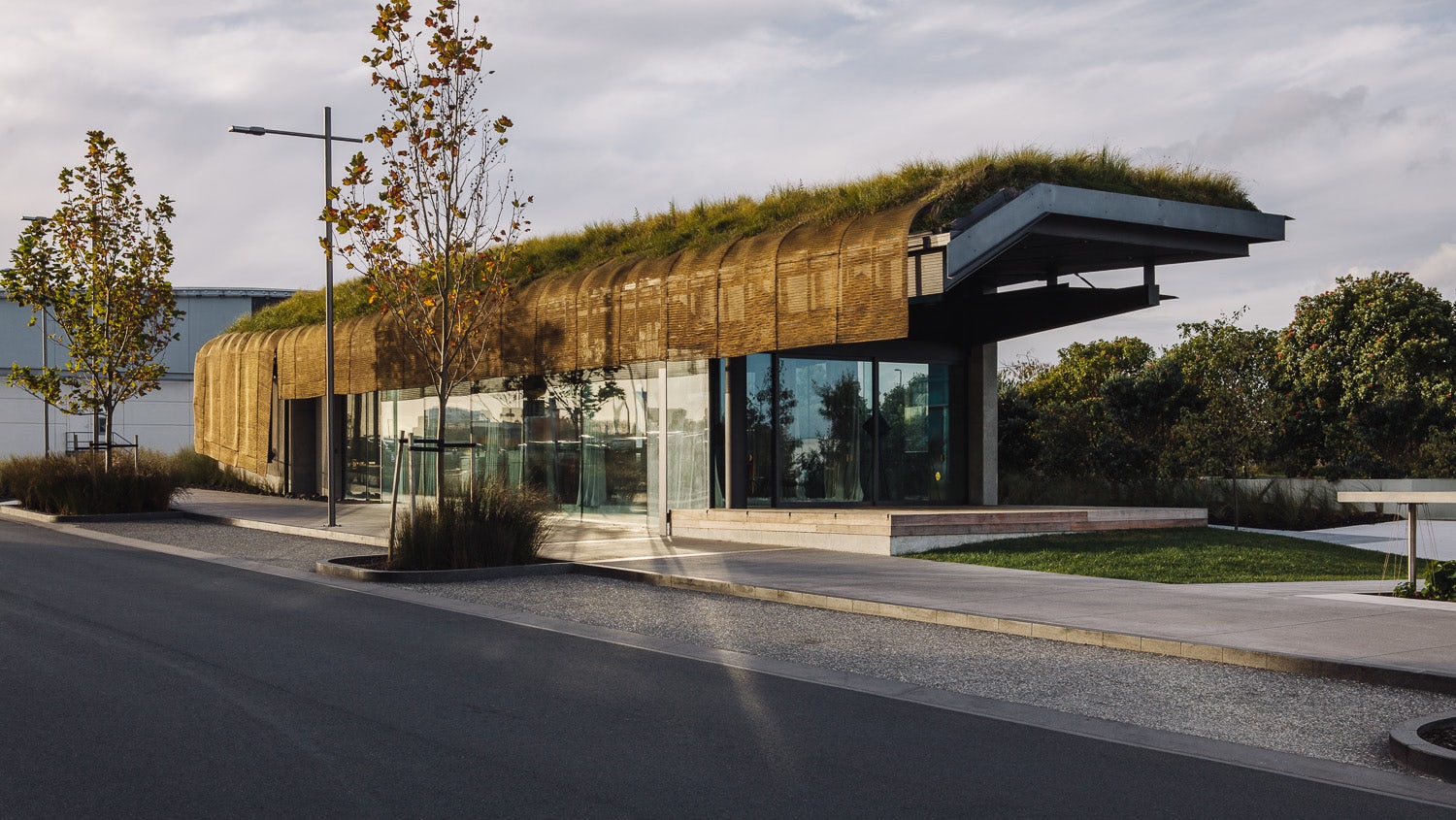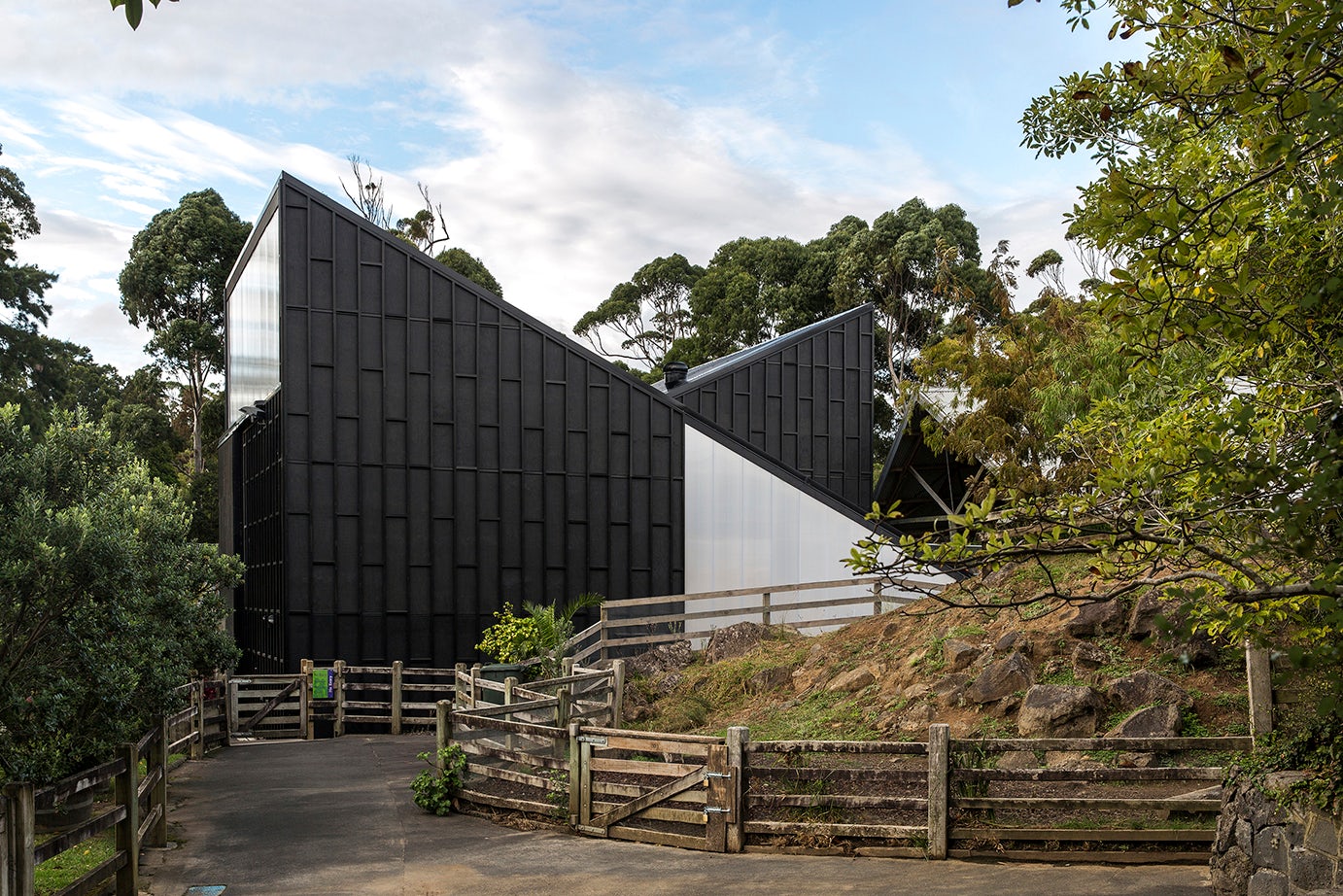New Zealand is an architectural treasure trove. Influenced by various cultures and building traditions from around the world, the island country holds incredible works of commercial, residential and cultural design. These projects are intimately tied to the country’s past and geography. Surrounded by ocean, New Zealand includes two main islands and a number of outlying islands that together define one of the largest Exclusive Economic Zones in the world, more than 15 times its land area.
As one of the last lands settled by humans due to its remote location, New Zealand has strong ties to Māori culture and traditions that continue to impact contemporary architecture. Historically, many iconic buildings in New Zealand were built with dark basalt blocks or Oamaru stone, materials that can be seen throughout areas like Christchurch and Dunedin. Today, much of the country’s modern architecture has become world-renowned for its critical connections to place and detailed craftsmanship.
Drawing together New Zealand’s powerful cultural projects from the Architizer database, this collection explores relationships between the country’s history, culture and landscape. While the projects vary widely in terms of scale and program, they each embody a dynamic, multicultural design approach that’s grounded in the bold character of New Zealand.

© Fearon Hay Architects

© Fearon Hay Architects
Te Kaitaka – ‘The Cloak’ by Fearon Hay Architects, Auckland, New Zealand
This sculptural project is located on the corner of two streets within a growing neighborhood. The flexible space was designed to accommodate a variety of different functions and events. Layering form, materials and texture, the project includes a contoured green roof over a timber frame and woven mesh screen.

© Jasmax

© Jasmax
The Surf Club at Muriwai by Jasmax, Muriwai, New Zealand
Sited within a major beach destination, this Surf Club was designed as a focal point for the local community. Programmatically, the project includes space for education, gatherings, leisure and sports. The project was inspired by the iconic New Zealand Kiwi bach.

© Bossley Architects

© Bossley Architects
Voyager NZ Maritime Museum by Bossley Architects, Auckland, New Zealand
This addition to the Voyager Maritime Museum was made to showcase New Zealand yachting. A series of planes were used to formally extend the existing building spaces upwards and out. The project’s varied polycarbonate shell and irregular volume was designed to recall the shifting conditions of wind and waves.

© Simon Devitt Photographer

© Simon Devitt Photographer
Longbush Ecosanctuary Welcome Shelter by Sarosh Mulla Design, Gisborne, New Zealand
The Longbush Welcome Center was designed to promote an understanding of environmental stewardship and appreciation. The small project is sited atop a rural plot in Gisborne, providing space for gathering and quiet contemplation.

© Patrick Reynolds

© Patrick Reynolds
Brancott Estate Heritage Centre by Fearon Hay Architects, Marlborough, New Zealand
This heritage center in Marlborough was designed as a singular plane among the vineyard landscape. The project’s gravel-ballasted roof extends over numerous spaces while opening up to views of the valley floor.


Auckland Art Gallery by Francis-Jones Morehen Thorp (FJMT), Auckland, New Zealand
Named the World Building of the Year, the Auckland Art Gallery was designed as an adaptive restoration of existing buildings and a new public project. Programmatically, the gallery includes storage and support spaces, a redesign of Albert Park, and exhibition areas. The building was created around ‘tree-like’ canopies that cover and define entry to the atrium, forecourt and galleries.

© Monk Mackenzie

© Monk Mackenzie
Giraffe Houseby Monk Mackenzie, Auckland, New Zealand
The Giraffe House was designed for the Auckland Zoo as a new giraffe breeding shelter. A keeper area and two dens were surrounded by a mass that was carefully broken down by intersecting forms and overlapping functions. The project was designed with maximum flexibility for changing giraffe needs.

© Patrick Reynolds

© Patrick Reynolds
Rore Kahu by Cheshire Architects, Oihi Road, Te Tii, New Zealand
Commemorating the bicentenary of the first arrival of Christian missionaries to Aotearoa-New Zealand, the Rore Kahu includes both an interpretive structure and path linking the hilltop to the beach below. Native plants, including groves of manuka and kanuka bushes, welcome visitors as they enter the site from the hilltop road. The building itself is made of two tapered, enfolding walls of rammed earth and a triangulated roof structure.









